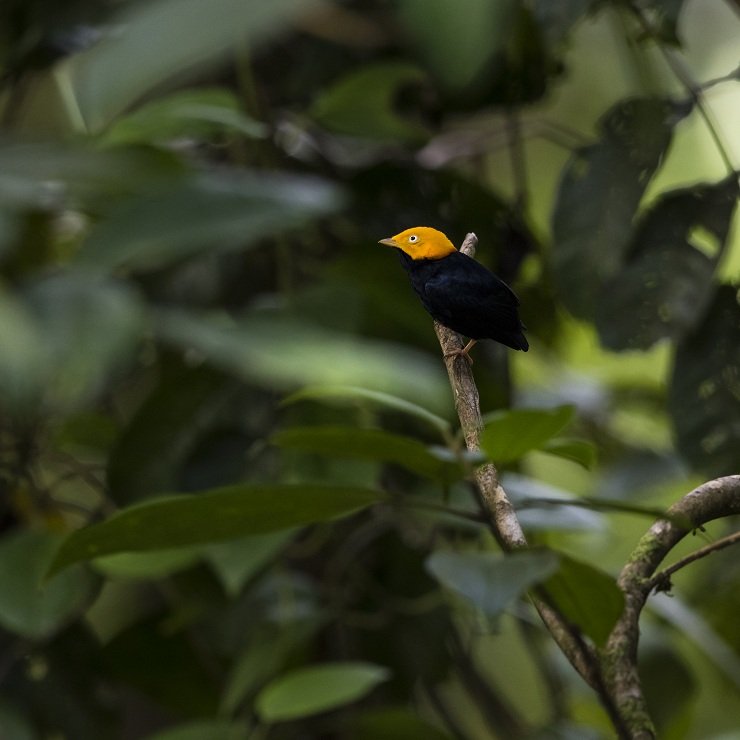
I’m writing this post primarily because I am currently dreaming of the subject. Having been penned in our house for the last month (and more), the last time we have been out birding seems like a distant memory. I was ardently working to finish a years-long project on the birds of T&T so those last few weeks have not been bird-less by any means. Thus, I have managed to maintain a hold on the few remaining threads of sanity.
Now that I have driven that to a state of relative completion and I am compelled to return to the forest, I learned that the government here has re-opened the hunting season. From what I’ve been hearing, sport hunters are chomping at the bit to also return to the forest in droves. Accompanied by hordes of hungry hounds, the peace we enjoyed in our last outing may not be replicated. It is not simply the distant baying of the hounds or the (more than) occasional gunshot – but a tangible shift in energy.
The forest and all its inhabitants are aware that there are people who have come to plunder. On small islands such as ours, forests are simply even smaller oases of life that are attacked from all sides. After experiencing the ebb and flow of energies over the years with the coming and going of the annual five month long hunting season, the strain is plain for me to see. During a two-year long moratorium on hunting in T&T, I had some of the most incredible birding experiences. Our yearly CBC racked up its highest numbers in a decade. Once the season reopened, numbers plummeted again.
Furthermore, given the current circumstances of a pandemic that is as a result of a zoonotic disease – the decision to reopen the hunting season is truly bizarre.
With the knowledge that we will have to carefully formulate an elaborate quest for a quiet patch, I’m drawn to recount our last mission. It was October 17th, and we spent almost the entire day within eyesight of our folding chairs and sandwiches. You can view the eBird list here.
It had been some months since we had been in the hills of Trinidad’s Northern Range, and let it be known that all forests are very different. While we have frequented the hilly forest of the Central Range (imaginative, I know) just a little southward, the Northern Range has an entirely different cast of characters. The higher elevation also attracts more rainfall, broad-leafed trees shed their dying leaves onto the floor to make a playground for species like White-necked Thrush, Grey-throated Leaftosser and Black-faced Antthrush.
The Northern Range is in fact the northernmost outcrop of the mighty Andes mountain chain, a fact one can only truly appreciate from the unique perspective of a boat traversing the Bocas del Dragón – the narrow passage between Trinidad and Venezuela.
It is for this reason birding in the Northern Range has a distinct feel to it. Simply driving along the road through the mountains can yield some interesting sights. This time, however, extensive road works and associated clearing of roadside vegetation severely impacted our birding. Rufous-breasted Wrens still vocalized, albeit from further away. The usual dawn chorus along the road was notably absent, however.
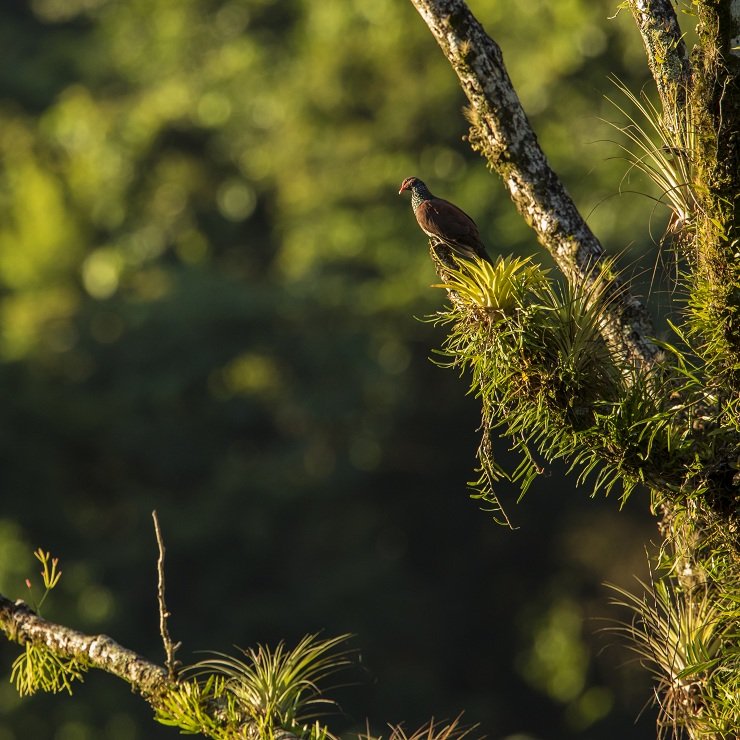
Just as the sun was rising we saw a pair of Scaled Pigeons on a tree in one of the valleys.
We drove past the still closed Asa Wright Nature Centre, lamenting its circumstances. Even with such a massive legacy and formidable history, the Centre is struggling to keep afloat during these trying times. About a hundred metres above the centre, we stopped at one of my favourite trees. A tree that is loved by birds is also loved by the birder. We heard some animal trundling through the bushes but got no visual. But with a Collared Trogon calling above us as well as all three species of honeycreepers feeding at eye-level, we were well and truly occupied. That corner was particularly fruitful as always, we even had appearances by a Cocoa Woodcreeper and a Chestnut Woodpecker.
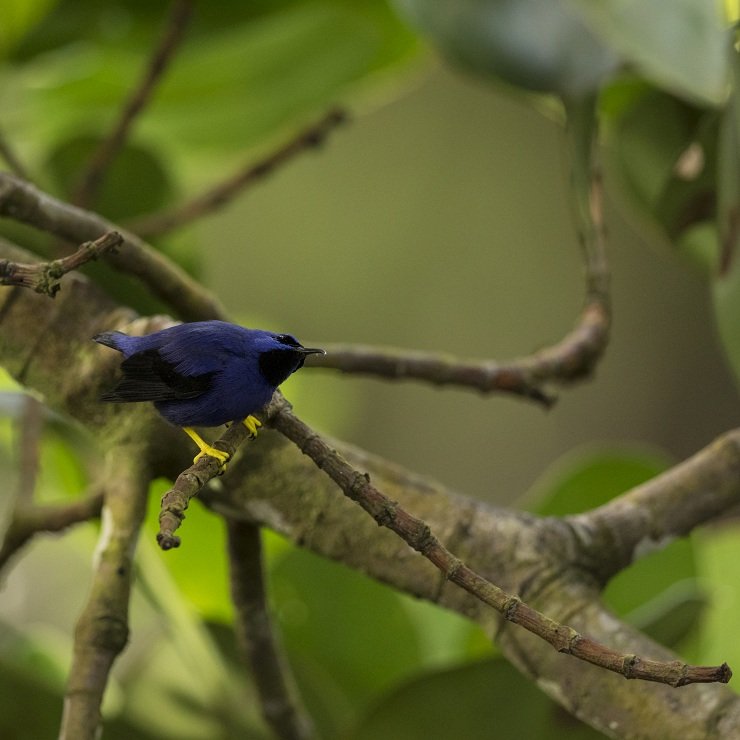
A Purple Honeycreeper forages alongside several Green and Red-legged Honeycreepers.
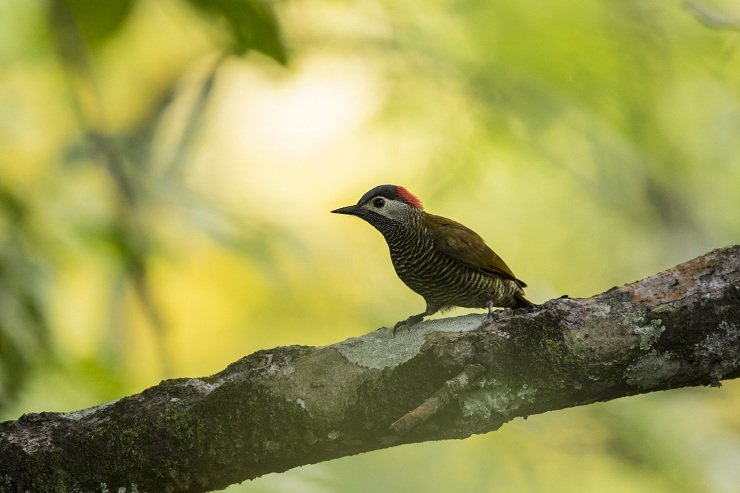
Within the same tree, a pair of Golden-olive Woodpeckers were also poking around. These medium-sized woodpeckers also feed on nectar and frequently are seen feeding alongside honeycreepers and tanagers.
The road was busy however, so we elected to continue our mission to somewhere a little more removed from the main thoroughfare.
Getting away from the main road was immediately rewarding, the songs of White-necked and Cocoa Thrushes permeated the forest along with the endless chatter of innumerable Bananaquits and Violaceous Euphonias. A pair of Ferruginous Pygmy-Owls called to each other, driving the passerine population into a panic.

Golden-headed Manakins are the smallest manakins in T&T and are usually found in the canopy. A number of them were furiously lekking and I managed to catch this male at eye-level.
It was difficult to ignore the din caused by the pygmy-owls, and eventually we caved to curiosity and followed our ears.
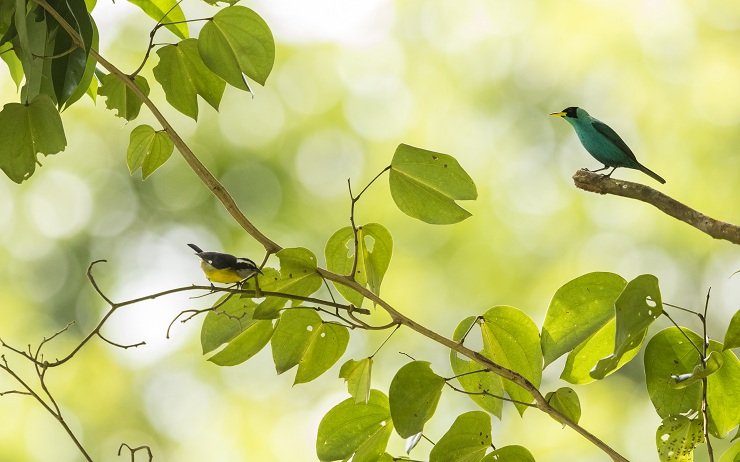
A Bananaquit and a Green Honeycreeper gesticulating wildly at the edge of a thicket.
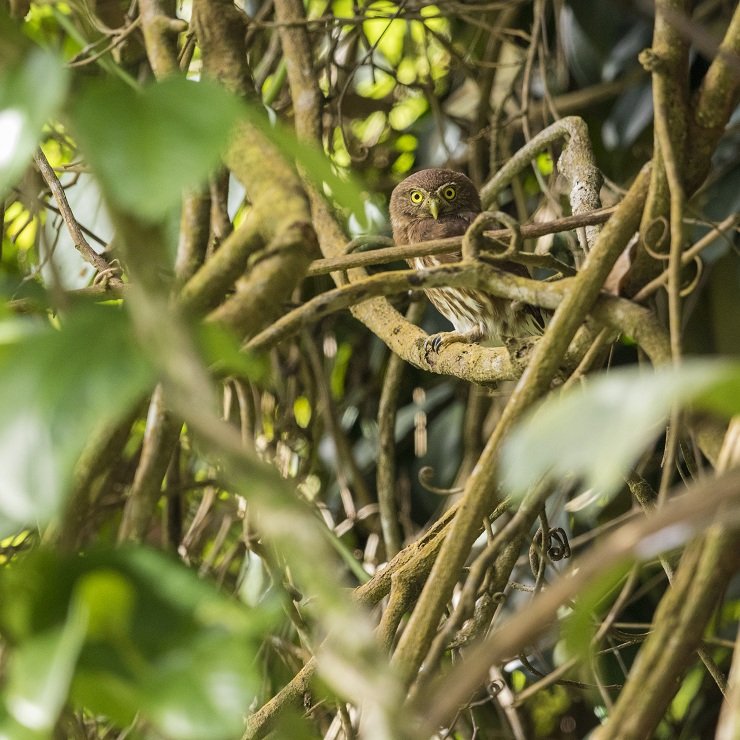
The tiny terror, a rather annoyed Ferruginous Pygmy-Owl. These fierce predators would much rather grab a juicy cicada than a bird; but with those oversized, powerful feet – I’m fairly certain they would take the opportunity if presented with it.
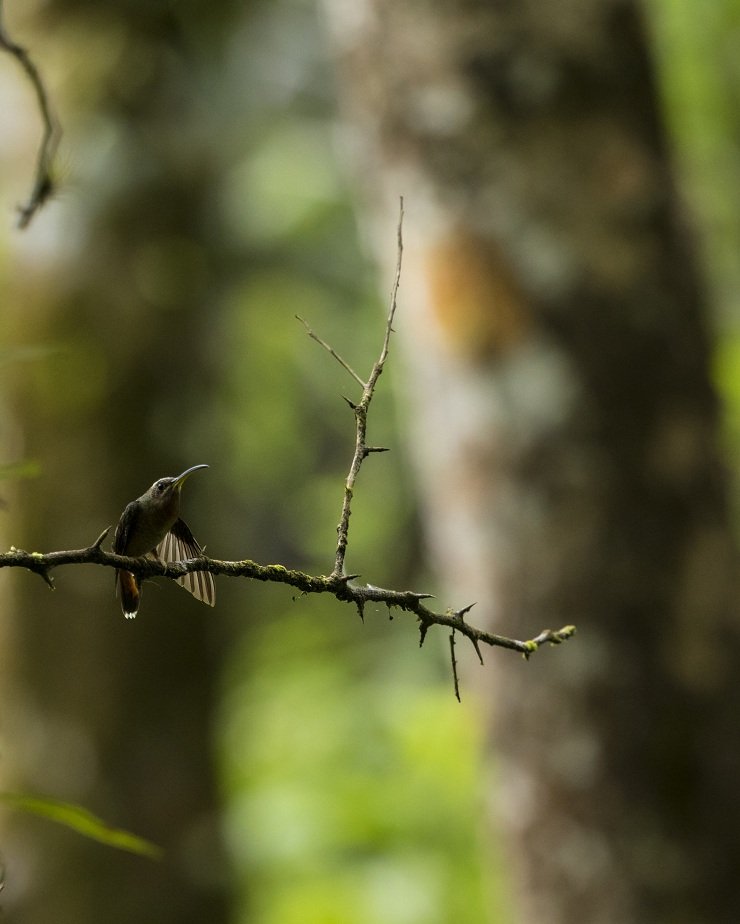
Photographing hummingbirds outside of a hummingbird garden is a different ball game, especially skittish species like this Rufous-breasted Hermit which we caught on its rest perch. It did not allow for a close approach and disappeared shortly after this stretch.
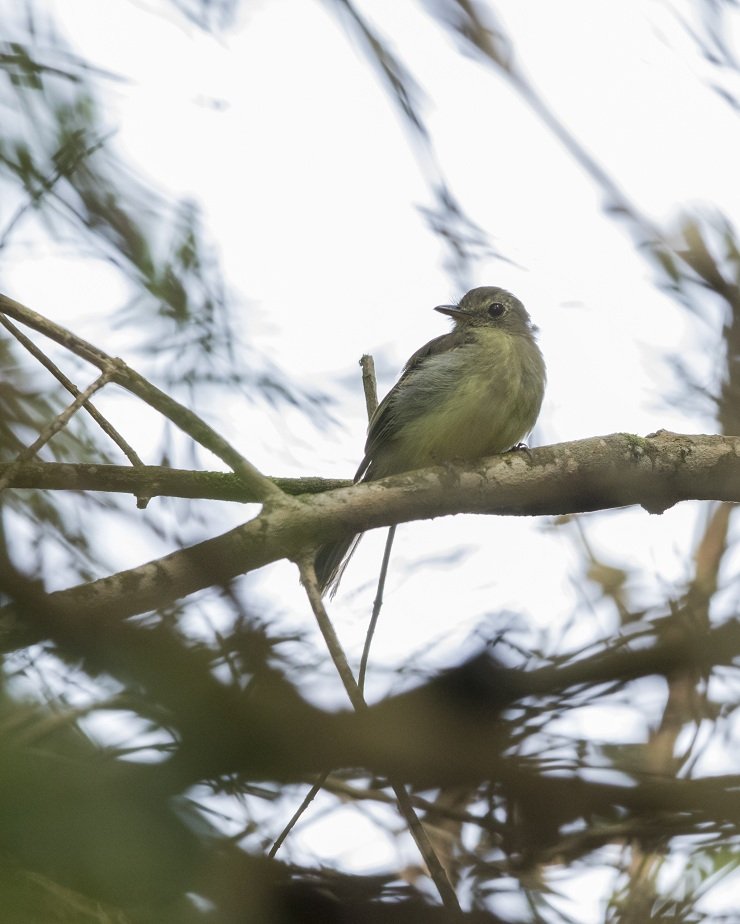
Flycatchers tend to be more accommodating, and I tried my luck with the local Euler’s Flycatcher. I always record it by its vocalization but somehow never before sought a photograph.
The pace of our birding was leisurely just as I enjoy it, but this all changed when we began hearing an Ornate Hawk-Eagle much closer than it was all morning. No longer was its call wafting through the hills, this time it was definitely nearby. The three of us stumbled over each other as we scrambled for a view of the open sky, hoping to catch a glimpse of this magnificent, rarely seen raptor.
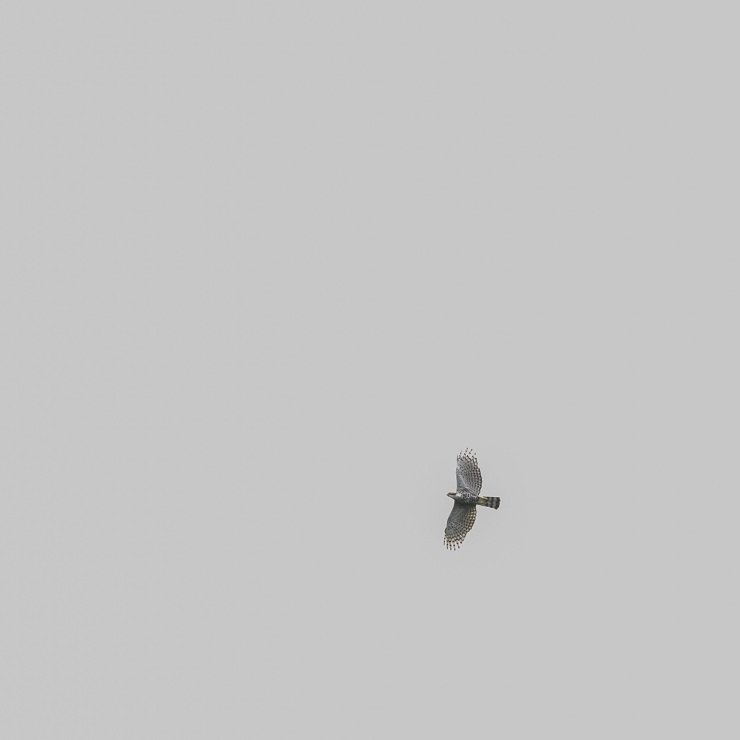
High in the sky, but better than nothing. Any day one sees an Ornate Hawk-Eagle is a great day.
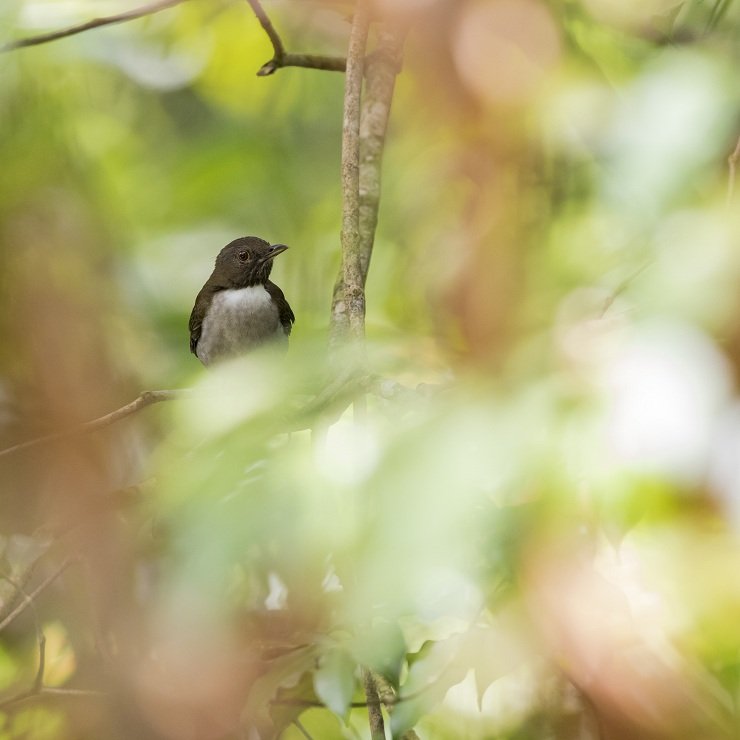
There was a particular branch just under the canopy frequented by a White-necked Thrush once every fifteen minutes or so, but it always caught me off-guard when it suddenly appeared. I eventually caught this one perched much lower.
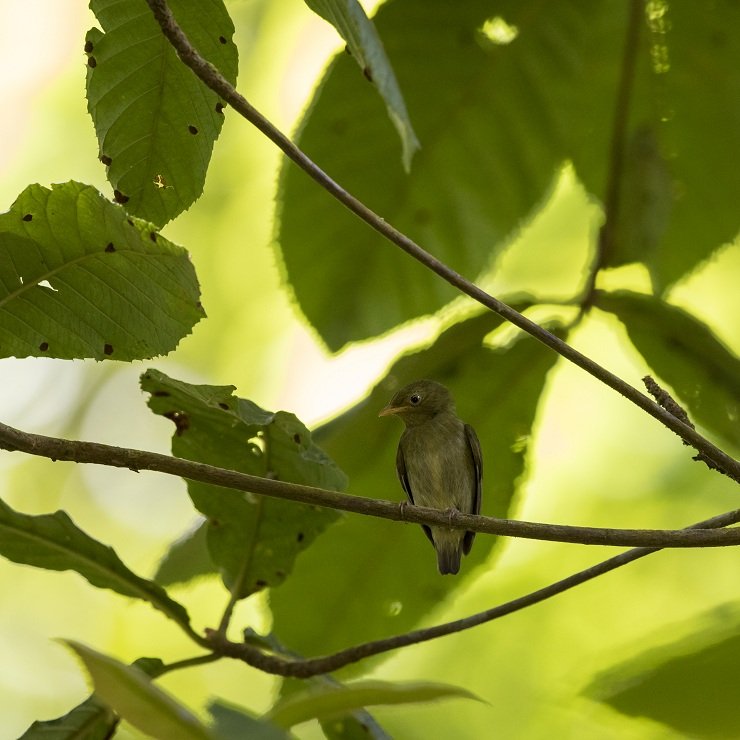
Female Golden-headed Manakins are even more difficult to spot than the males. They often sit motionless and call, beckoning frustration.
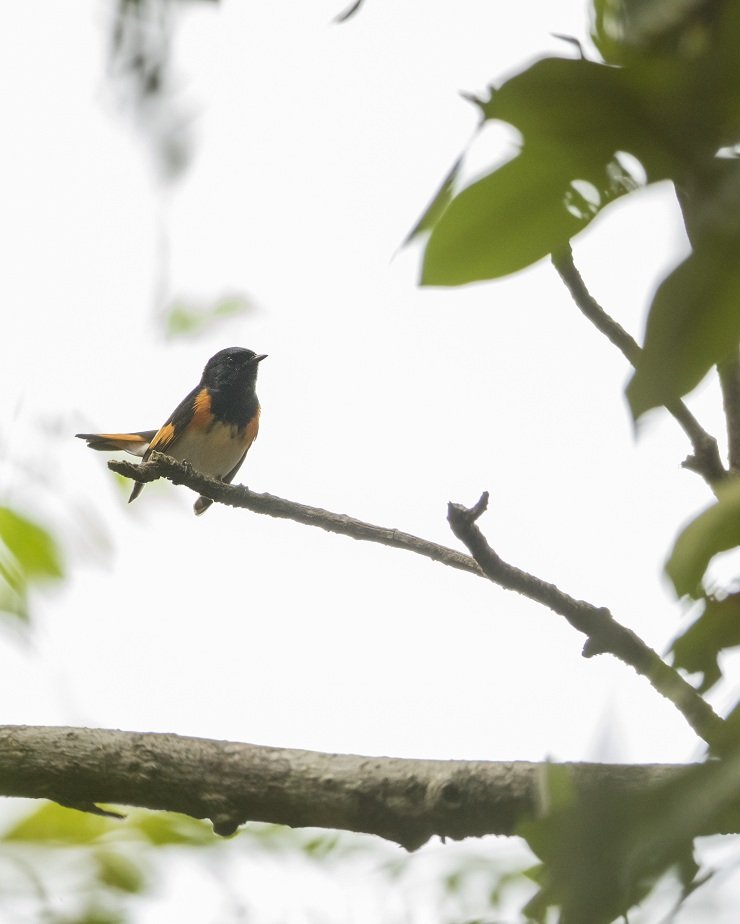
Just as we were about to leave, a lone American Redstart excited us. Each year I look forward to opportunities with these fiery warblers, one of my favourites.
We finally departed after just over seven hours of pure birdy relaxation, feeling so recharged that we immediately drove to another location to bird some more.











Leave a Comment